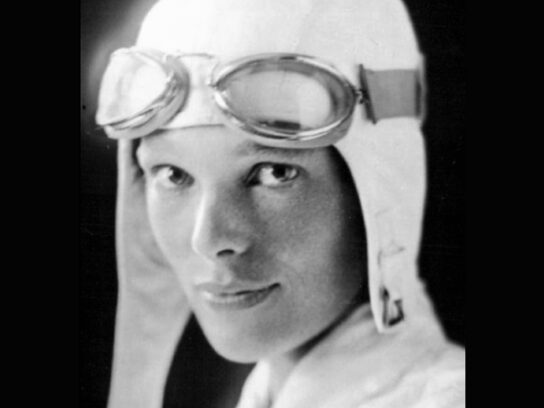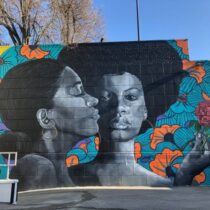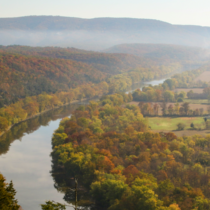
Last week we examined the major plausible theories for the disappearance in July 1937 of Amelia Earhart in her beautiful Lockheed Electra. But there are other, minor, theories, and some really bizarre ones, as follows.
First: Amelia became Tokyo Rose. This is the silliest theory of all. There was no one person who broadcast as Tokyo Rose, although Iva Ikuku Toguri D’Aquino was accused after WW II, imprisoned, pardoned by President Ford in 1977, and died in Chicago at age 90. Earhart looked nothing like D’Aquino. And there is no evidence of any connection between any Japanese propaganda broadcasters and Earhart.
Second: Amelia survived the crash and WW II, and moved to New Jersey to become a banker. This was proposed in 1970 by Joe Klass in his McGraw-Hill book Amelia Earhart Lives. Klass claimed that banker Irene Bolam of Middlesex County, N.J. was Amelia, based on her slight resemblance to Earhart and the fact that Bolam was a pilot. Bolam denied the claim, sued Klass for $1.5 million, and the book was officially withdrawn. But you can still buy the book, used but useless, on Amazon for $8.95.
Third: Earhart crashed in the Nikumaroro atoll lagoon in what is now the Republic of Kiribati. This minor (silly?) theory was proposed in March 2021, when Mike Ashmore of California thought he spotted the plane or a wing just off Taraia Point in the NE part of the lagoon, on an Apple Maps image. He also thought he spotted SOS messages in underwater sand on the island in old photographs. I have examined the lagoon using Google Earth and see nothing. From my substantial experience in searching for lost aircraft, I know that overhead photos often give misleading images, and that airplane wrecks can be hard to spot even in person from quite nearby. TIGHAR has physically searched the lagoon on several expeditions. And why would a castaway write a distress message underwater, when there are miles of fine beaches on Niku? Go to roadtoamelia.org/, and see what you think.
Fourth: Earhart crashed off Buka island in Papua New Guinea (PNG). Bill Snavely of Salisbury, Maryland has proposed that Earhart encountered strong 20 knot headwinds, realized part way to Howland that she was not going to make her destination, and turned back to the nearest airfield, a 2300-foot runway on Buka. He has identified and dove on the debris field of a non-military, two-engined aircraft in 100 feet of seawater off Buka, that looks like the Electra. (See ProjectBlueAngel.com.) He feels he needs $500,000 to do a proper expedition to verify this theory. (I suggest a $50,000 further recon effort should be the next step.)
This minor theory seems unlikely, since radio operators on Howland were convinced that Earhart was nearby and her radio signals were being read “5 by 5.” But recent research by TIGHAR scientist Greg George of Illinois has shown that sunspot activity around the time of the disappearance was phenomenally high, and could possibly have resulted in Earhart’s radio signals appearing strong at Howland, when she was actually 1760 nautical miles away.
To get involved in the search for Amelia, you should read up on the case at TIGHAR.org, and perhaps join that organization. Some of their analysis is in “true believer”—style advocating for the Niku theory, but most is good objective science. Then read the best scientific book on the case, Amelia Earhart’s Shoes, (2nd edition) by Dr. Tom King, Kenton Spading, et al.
Getting hooked? Contact BetchartExpeditions.com to get on the notification list for any future Earhart expeditions – this travel logistics firm organized past Earhart “expeds,” and does complex trips for scientific groups to view eclipses and other phenomena. Participation might cost about $11,000 for everything, per person. Betchart will likely be tapped if the “next big thing” comes to pass – a wider study of Niku and its entire history as a microcosm of cultural and environmental change. This has been proposed by expert archaeologist Dr. Richard Pettigrew of the Archaeology Legacy Institute in Oregon. ALI also sponsors annual scientific seminars on the Earhart case. (See archaeologychannel.org.)
Getting REALLY keen? Let’s say you have a million dollars to spend on your search for Amelia, and you want to optimize your success probability. This is exactly the problem faced every day by search and rescue/recovery (SAR) teams. We use Mattson voting, where team members study the facts of the case, carve up the terrain into regions, then vote in secret on the probability of each region holding the victim. The votes are tallied and the resulting group consensus drives the resource allocation. Amazingly, this system works very well.
My Mattson vote in the Earhart case is: 50% for Nikumaroro (with the bodies on shore and the plane offshore in more than 5000 feet of seawater); 10% for crashed near Howland; 20% for crashed in the Howland-Niku corridor; 5% for crashed and captured in the Marshalls; 5% for crashed near Buka, PNG; 1% for in the Niku lagoon; and 9% for what SAR teams call “ROW” (rest of world). This means basically, “We have no bloody idea, but she is outside the specified search regions.” This is a substantial change from 2017, when I would have voted 80% for Niku.
So, start spending your million dollars, and good hunting!
Photos courtesy Lew Toulmin
- A. A map of the South Pacific, showing Earhart’s departure point in Lae, New Guinea, her destination of tiny Howland island, with Nikumaroro to the south of Howland, and the Marshall Islands to the northwest. Buka island in what is now Papua New Guinea (PNG) is shown in the lower left. All except Lae are possible crash sites for Earhart
- B. Iva Ikuku Toguri D’Aquino was imprisoned for allegedly being “Tokyo Rose.” She was pardoned in 1977. Does she look like Amelia Earhart to you?
- C. In 1970 banker and pilot Irene Craigmile Bolam of New Jersey was alleged to be Amelia Earhart in a McGraw-Hill book; she denied the allegation, sued, and the book was officially withdrawn by the publisher. But the author refused to publicly change his assertion, and the book can still be purchased used on Amazon.
- D. Mike Ashmore of California recently asserted that he spotted Earhart’s Electra or its wing in an Apple Maps photo, just off Taraia Point in the NE part of the Nikumaroro lagoon, in the South Pacific island nation of Kiribati. But such images can be quite deceptive – what is your verdict?
- E. A landing light recovered by Bill Snavely of Maryland from a plane wreck (possibly the Earhart Electra) off Buka island in Papua New Guinea. Bill wants to prove his theory with a $500,000 expedition. Ante up?








Comments are closed.